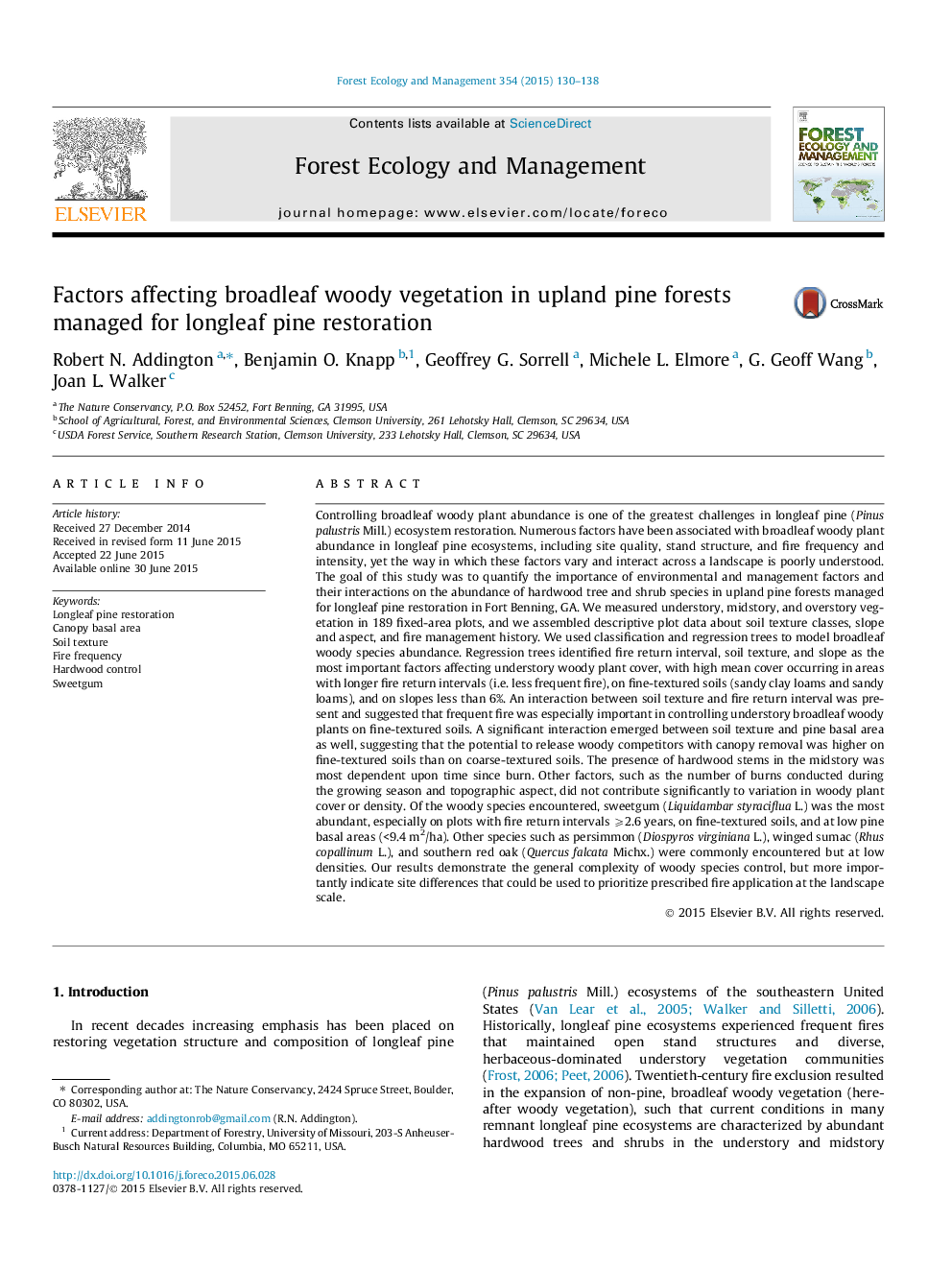| کد مقاله | کد نشریه | سال انتشار | مقاله انگلیسی | نسخه تمام متن |
|---|---|---|---|---|
| 86143 | 159168 | 2015 | 9 صفحه PDF | دانلود رایگان |
• Broadleaf woody vegetation management is important to longleaf pine restoration.
• Fire return interval, soil texture, and slope all influence woody vegetation.
• Topographic aspect and season of burn were not found to be significant.
• Sweetgum may merit special management consideration.
• Results will help guide management prescriptions for longleaf pine restoration.
Controlling broadleaf woody plant abundance is one of the greatest challenges in longleaf pine (Pinus palustris Mill.) ecosystem restoration. Numerous factors have been associated with broadleaf woody plant abundance in longleaf pine ecosystems, including site quality, stand structure, and fire frequency and intensity, yet the way in which these factors vary and interact across a landscape is poorly understood. The goal of this study was to quantify the importance of environmental and management factors and their interactions on the abundance of hardwood tree and shrub species in upland pine forests managed for longleaf pine restoration in Fort Benning, GA. We measured understory, midstory, and overstory vegetation in 189 fixed-area plots, and we assembled descriptive plot data about soil texture classes, slope and aspect, and fire management history. We used classification and regression trees to model broadleaf woody species abundance. Regression trees identified fire return interval, soil texture, and slope as the most important factors affecting understory woody plant cover, with high mean cover occurring in areas with longer fire return intervals (i.e. less frequent fire), on fine-textured soils (sandy clay loams and sandy loams), and on slopes less than 6%. An interaction between soil texture and fire return interval was present and suggested that frequent fire was especially important in controlling understory broadleaf woody plants on fine-textured soils. A significant interaction emerged between soil texture and pine basal area as well, suggesting that the potential to release woody competitors with canopy removal was higher on fine-textured soils than on coarse-textured soils. The presence of hardwood stems in the midstory was most dependent upon time since burn. Other factors, such as the number of burns conducted during the growing season and topographic aspect, did not contribute significantly to variation in woody plant cover or density. Of the woody species encountered, sweetgum (Liquidambar styraciflua L.) was the most abundant, especially on plots with fire return intervals ⩾2.6 years, on fine-textured soils, and at low pine basal areas (<9.4 m2/ha). Other species such as persimmon (Diospyros virginiana L.), winged sumac (Rhus copallinum L.), and southern red oak (Quercus falcata Michx.) were commonly encountered but at low densities. Our results demonstrate the general complexity of woody species control, but more importantly indicate site differences that could be used to prioritize prescribed fire application at the landscape scale.
Journal: Forest Ecology and Management - Volume 354, 15 October 2015, Pages 130–138
